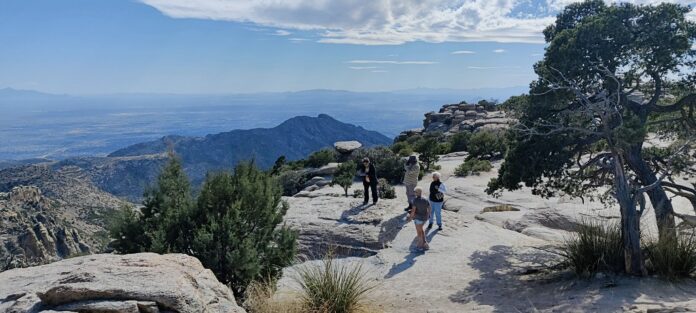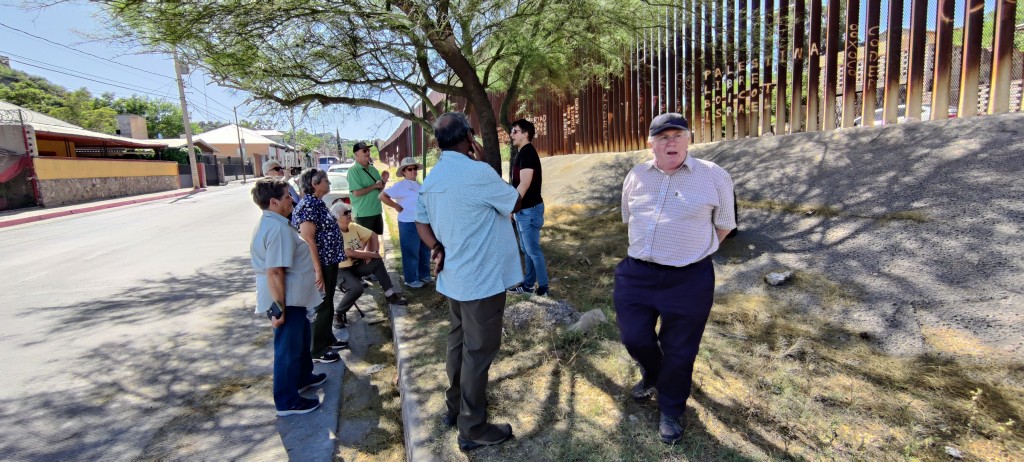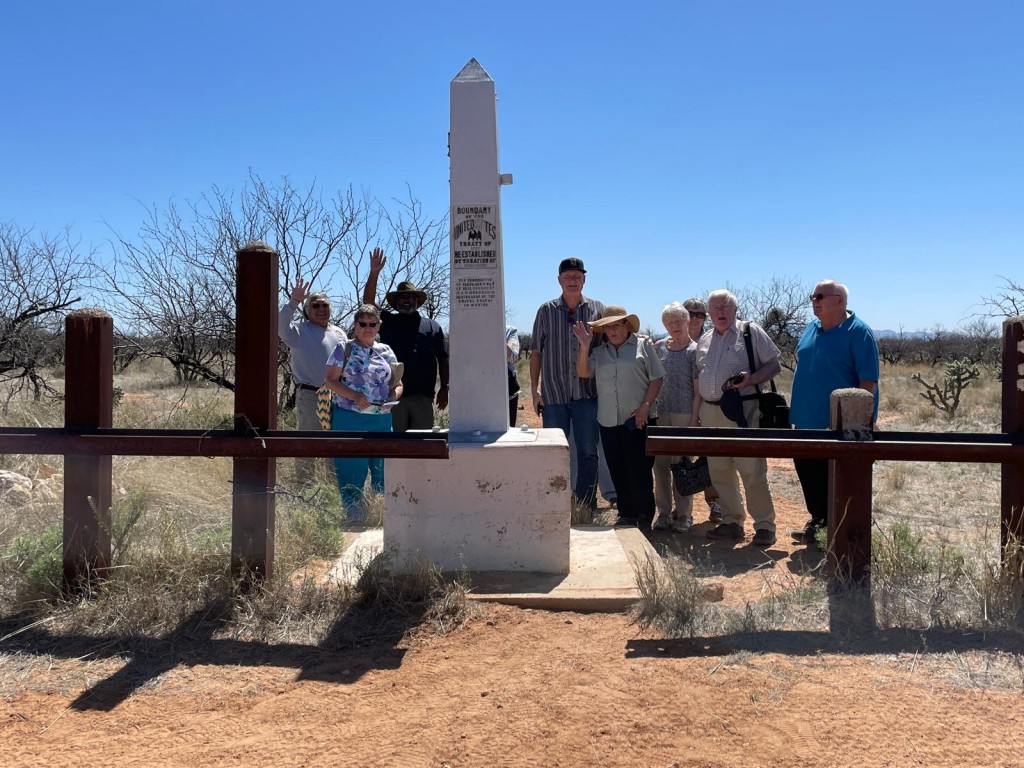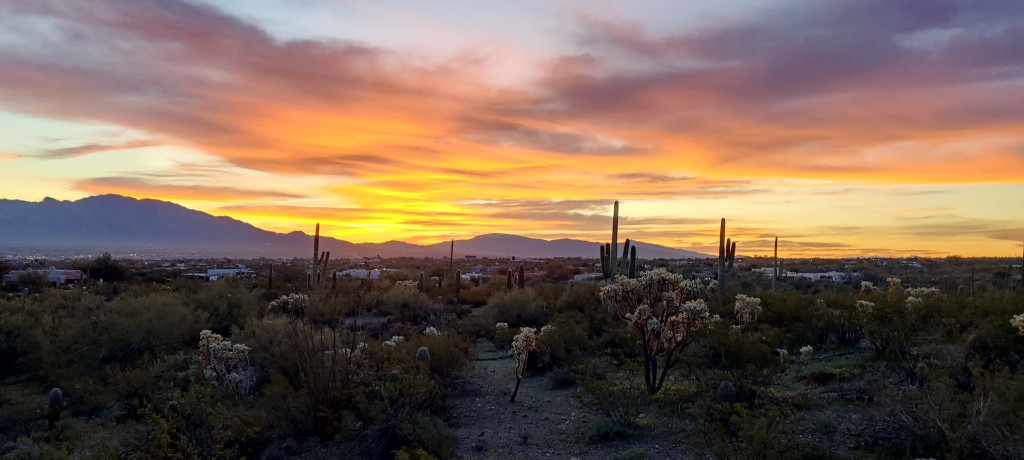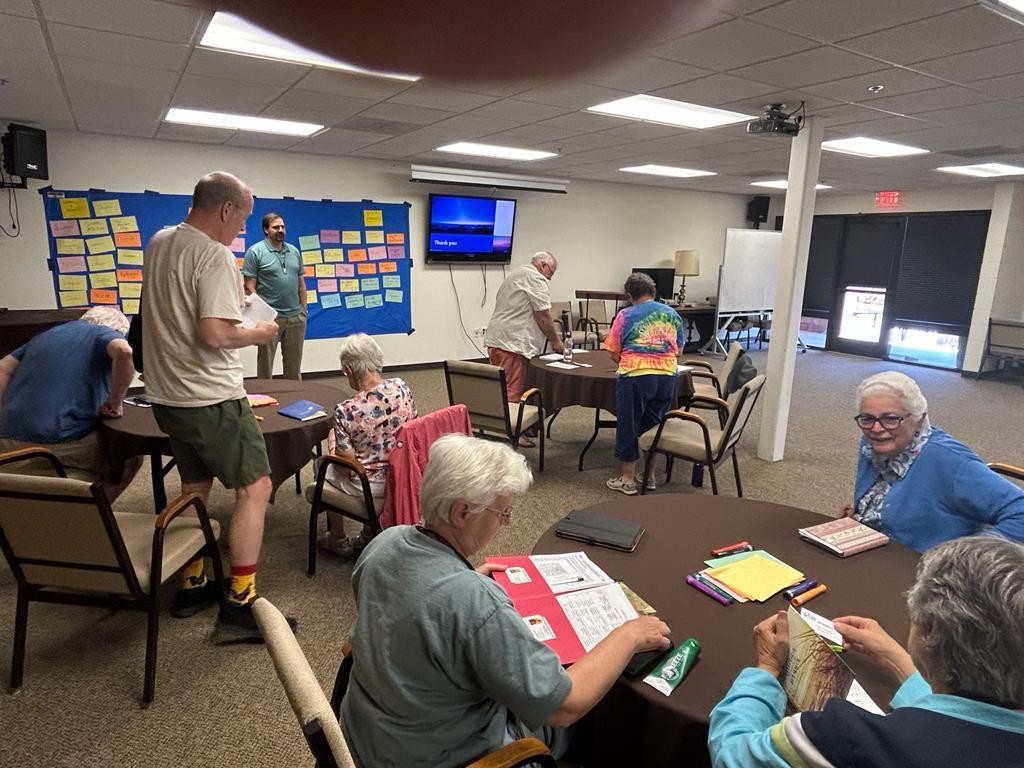by Peter Tran
TUCSON, Arizona – Blanca is a mother of three children. A native of the southwestern Guerrero State of Mexico, she packed up her three children and fled up north to the U.S.-Mexico border after witnessing the murder of her husband. The four of them were attacked by a group of gang members. “They were shooting at our vehicle, more than 30 bullets. Thank God, my three children and I were spared, but not my husband,” said Blanca as tears filled up her eyes.
Blanca was telling her story to the participants of the spring 2023 “Contemplative Study and Retreat Sabbatical,” who were visiting the Kino Border Initiative in Nogales, Mexico. The 10 priests and sisters from around the world were visiting this Church-run center in Mexico that provides shelter, educational and legal aid, daily meal for the would-be asylum seekers. The priests and sisters spent a day in late April, serving lunch to the migrants, and providing entertainment to migrant children.
This border immersion ministry is part of the experience of the sabbatical program organized by the Redemptorists at the Redemptorist Renewal Center in Tucson, Arizona. The participants of this spring program included an Australian, four Irish nationals, a Puerto Rican, and four Americans.
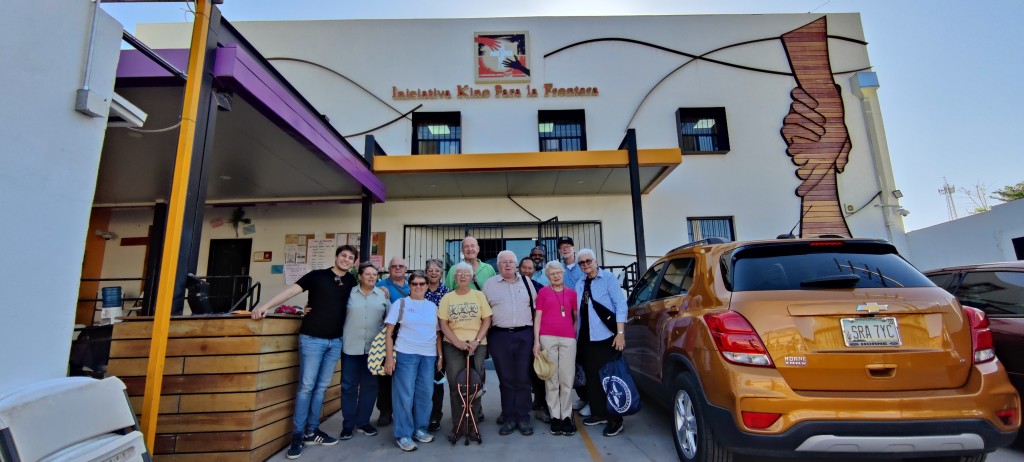
Redemptorist Father Dan Baragry, a sabbatical participant from Ireland, said, “The conversation with Blanca was the highpoint of our immersion experience in Nogales. Her story certainly numbed and shocked me, and our whole group, into silence as she described the murder of her husband by Cartel members and the seemingly miraculous escape of herself and her three children from the bullet-ridden car. Her quiet courage, evident faith, and trust in God, along with her determination to make a new beginning and find a new life for her children was evident, impressive, and humbling. Her story gave me a more compassionate understanding of and insight into the reality of migration on the Mexico/US border.”
Describing the goals of the sabbatical, Redemptorist Father Stephen Rehrauer, interim director of the Redemptorist Renewal Center, said, “We want the participants, most of whom have been ministering for many years, often in difficult or challenging apostolates, to have an opportunity to do what they have not been able to because of the constant demands of ministry: to rest, to reflect upon how God has been and continues to be present and active in their lives, to reconnect with their vocational call, the mission and charism of their religious order or diocese, and to form together a small religious community of persons by sharing what they have learned as servants of the Lord and of God’s people with each other.”
To accomplish that, Fr. Rehrauer said, the Redemptorists provide a relaxed and balanced schedule in an environment of natural beauty and quiet, which helps them develop and live a “contemplative attitude” during their 10-week stay. “We ask them throughout their time here to continually reflect upon and recognize the presence and creative living activity of God in their life story, in the ministry they have done, in world events, in the beauty and power of nature, even in the cosmos.”
The Redemptorist Renewal Center is located at the foothills of Tucson Mountain Ranges, about 13 miles northwest of downtown Tucson, and 80 miles north of the Mexico/US border. The city is in the Sonoran Desert, an arid region covering about 100,000 square miles in southwestern Arizona and southeastern California, and most of Baha California and the western state of Sonora, Mexico.
The RRC runs two ten-week sabbatical programs each year, one in the spring (March-May) and another in the fall (October-December). “In our program we encourage the participants, mostly priests and men and women religious, to rest, recharge their physical and spiritual batteries, explore themes of interest they may have wanted to do for a long time of active ministry,” said Fr. Rehrauer.
The program explores various themes, such as self-care sabbatical, desert spirituality, pathways to contemplation, selected scripture passages, and contemplative autobiography. The participants also study life transition, to learn to forgive, heal the hurt and pain, and deal with grief and anxiety. Each week the session of body, mind and spirit helps the participants learn to become aware of their whole wellbeing. A few weeks of examining interior life, the program continues with sessions on justice for the earth and the universe (Laudato Si, Cosmic Expansion, and Fratello Tutti), (photo5) and for people in the margins with visits to migrant centers at the border. The program ends with a session on taking sabbatical home, urging the participants to reflect on their spirituality of transition. Each week the program sets one day as the “Desert Day of Prayer,” a personal retreat or integration day. Sister Donna Marie Gribschaw talked about how important the Desert Days of Prayer are in the program. “I appreciated having the time to pray and reflect more deeply. They certainly reminded me of being in directed retreat,” said Sr. Gribschaw, a member of the Divine Providence Sisters from Pennsylvania.
Oblate Father Leo Philomin from Ireland said, “The Redemptorist community made me and the whole group feel welcomed. Each one had a genuine sense of delight that we were here and enjoying the RCC space. The Tuesday ‘Happy Hour’ with the Redemptorists community was a highlight, and their friendship was heartfelt. The excellent and well-reflected morning homilies at Mass were food for thought and reflection.”
Besides the Kino Border Initiative in Mexico, this spring 2023 program also included immersion trips to the Diocese of Tucson-run Casa Alitas, a center that welcomes some 500 migrants each day, the Tohono O’odham Nation, where they learn about the culture of O’odam people and life at the border, and Mt. Lemon SkyCenter where they viewed the space through the Schulman 32-inch and the Phillips 24-inch telescopes. These are the two largest telescopes for public outreach in the Southwest. The participants also enjoyed various national parks, Chiricahua, once home to the Chiricahua Apache, and the Grand Canyon, one of the world’s natural wonders. Our facilities are at the foothills of the Tucson Mountains covering the National Saguaro Park, where participants were introduced to the desert life with a hiking tour in the park grounds, the wash, and various trails.
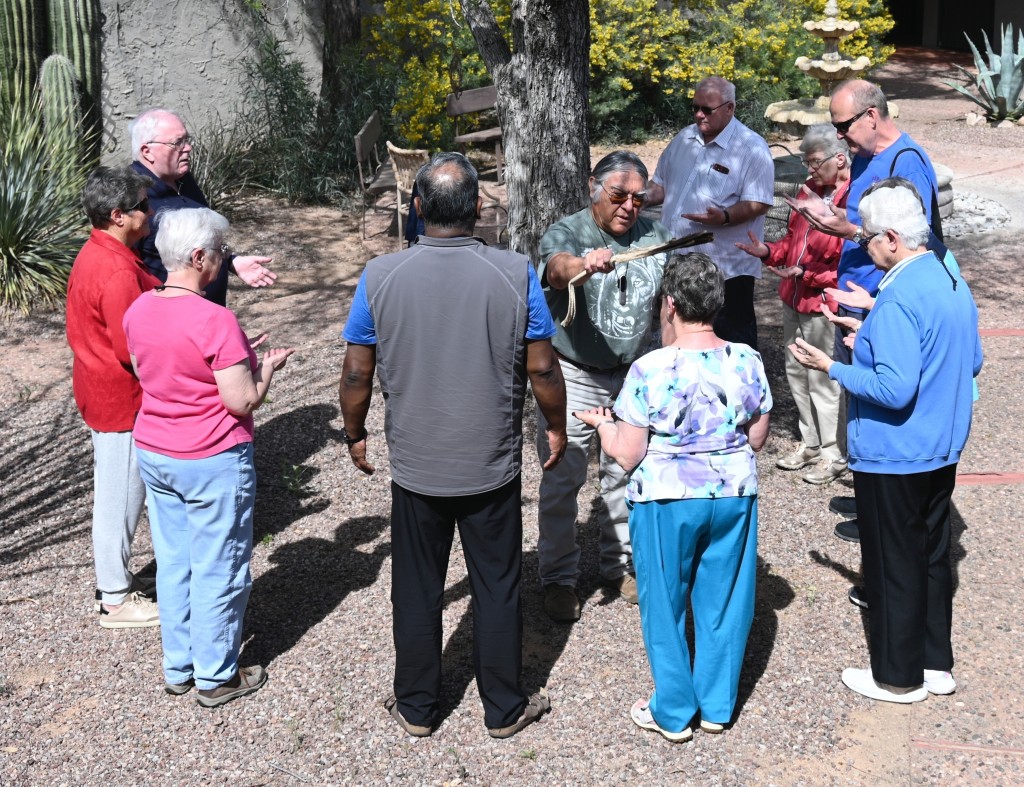
Samuel Fayuant, a Tohono O’odham cultural officer, holds a sacred smudging ritual of blessings for spring 2023 sabbatical participants as they begin their program. 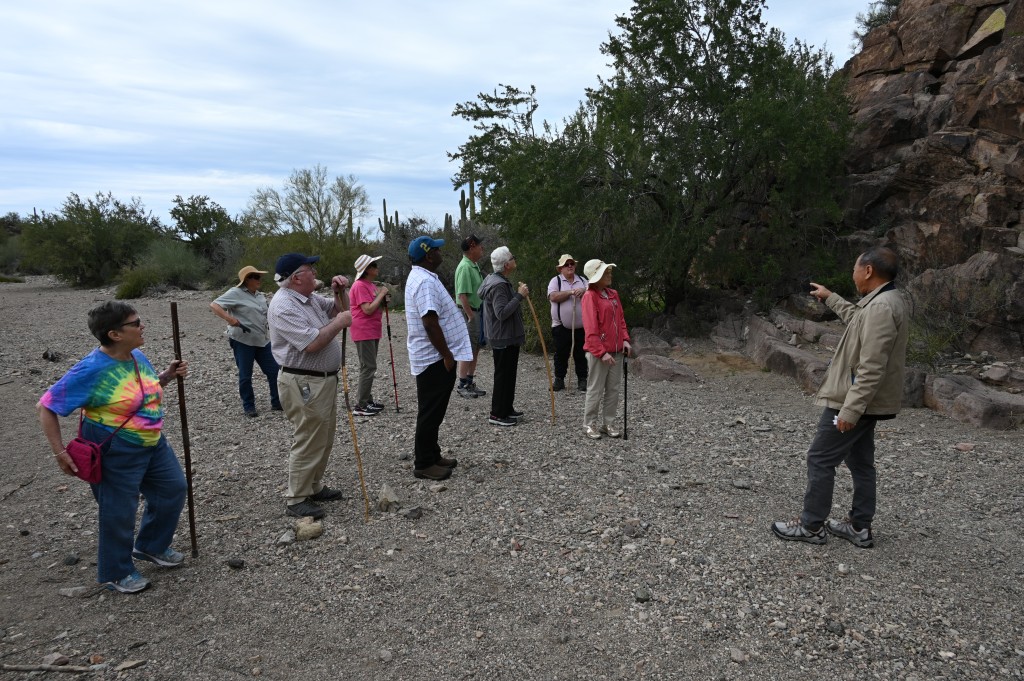
Participants are introduced to the Sonoran Desert with a desert walk at the Saguaro National Park. 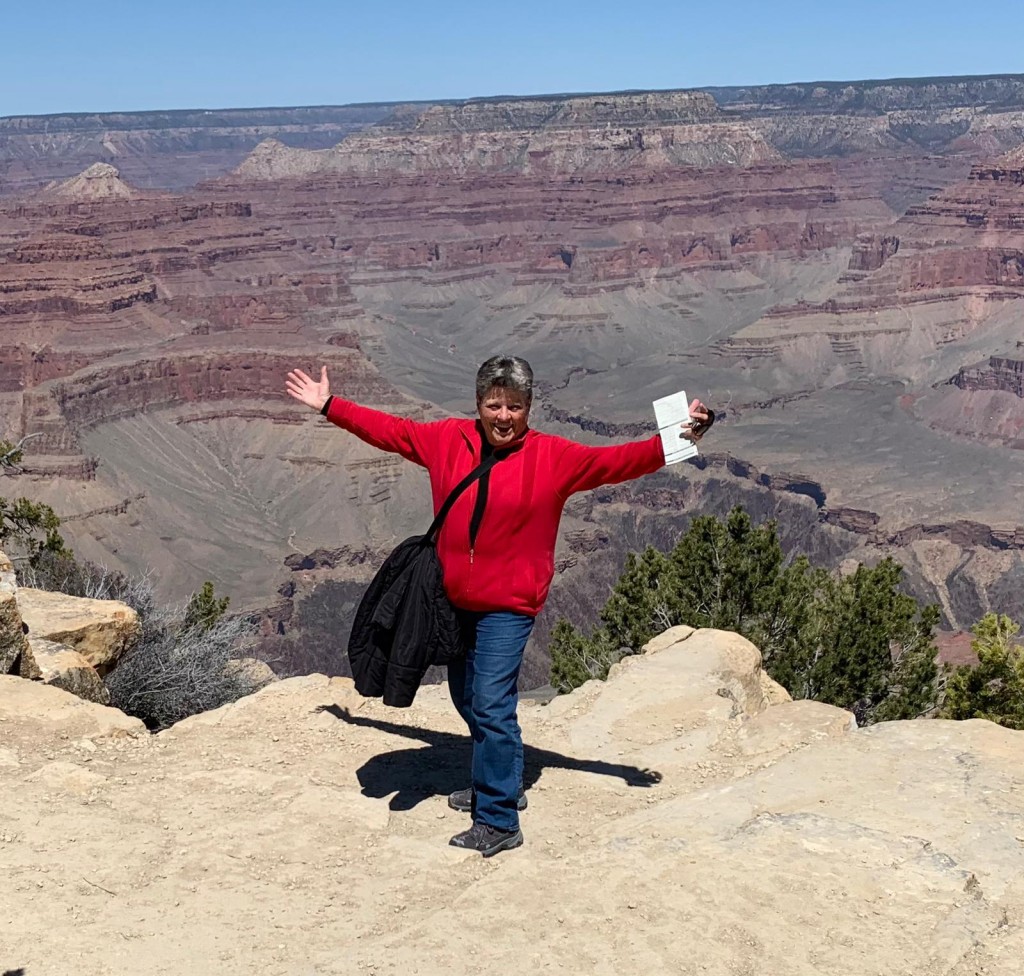
Grand Canyon outing. 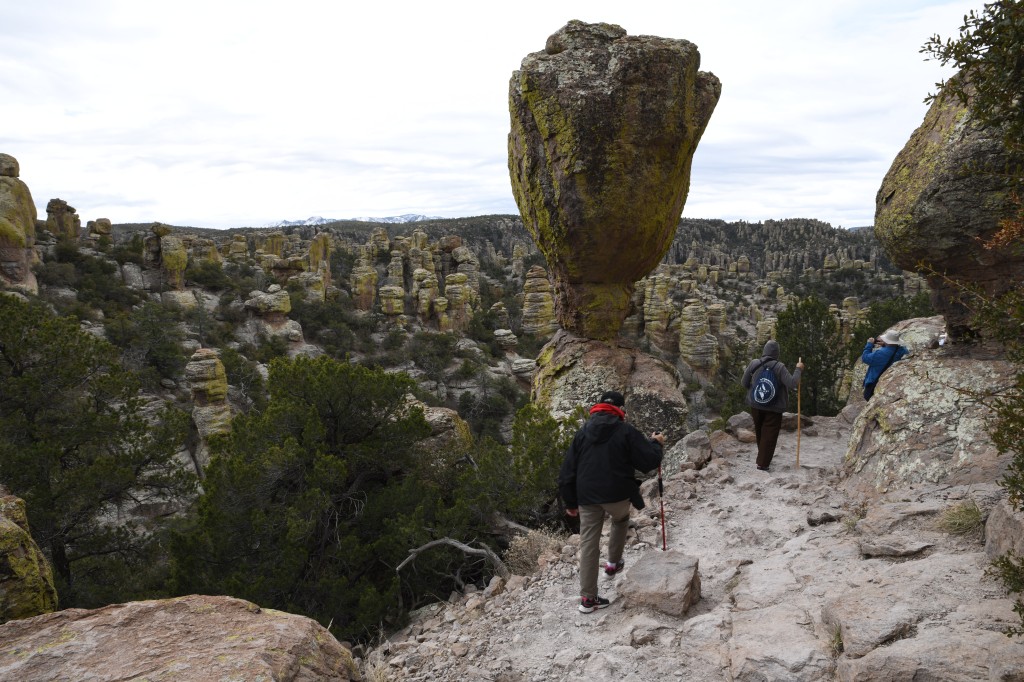
Chiricahua National Park outing
Talking about his new-found sabbatical friends, Fr. Philomin said, “Every person who gathers for the Sabbatical is chose and sent by God into my life to shake it up, challenge it, encourage it, heal it and much more. Each person contributed to my more profound listening to Got and ‘letting go’ of things I didn’t need to hold on to. This Sabbatical Community was a great blessing. Their freedom in relating, sharing, and planning outings and events was beautiful. The group also allowed me the freedom to take time out and apart – to be contemplative and quiet.”
Reflecting on the sabbatical experience, Fr. Baragry said this program has been “a precious and blessed experience,” adding, “I arrived here after eight years in Provincial leadership feeling tired, empty, discouraged to a degree, out of touch with my own needs and inner life and feeling that I had lost touch with God. The idea of a sabbatical in the desert attracted me for some reason. I began to realize, perhaps because my image of the desert as a dry, desolate, and barren place reflected my own sense of my inner life at the time. … This sabbatical time has allowed me to rest and renew my energy, it has nurtured and revived my spiritual life and my relationship with God.”
Fr. Rehrauer talked about the title and goal of the sabbatical. “Authentic contemplation is not a flight from reality or an attempt to escape from or explain away the pain of being human. Contemplation is contemplation of life and this world in all its harsh truth; the realization that God is especially present and active there where it is so difficult to recognize that presence.” He said that contact with the experiences of those who suffer like Blanca and others at the Kino center and Casa Alitas ensures that “our contemplation does not become escapism or an excuse or justification for inactivity.”
Blanca and those in the migrant centers provide the sabbatical participants “the tangible evidence that our vocation and our ministry as a Church makes a real difference in this world,” he added.



